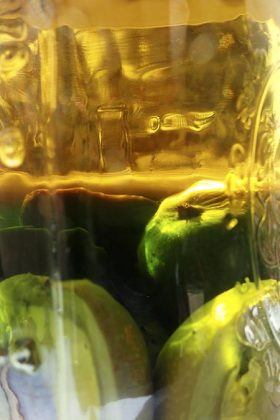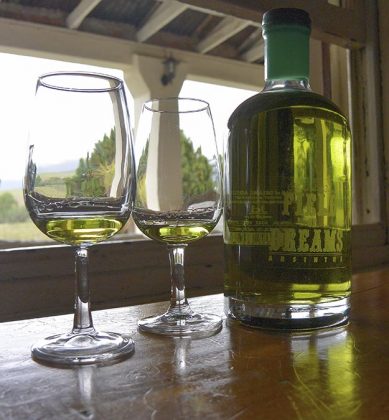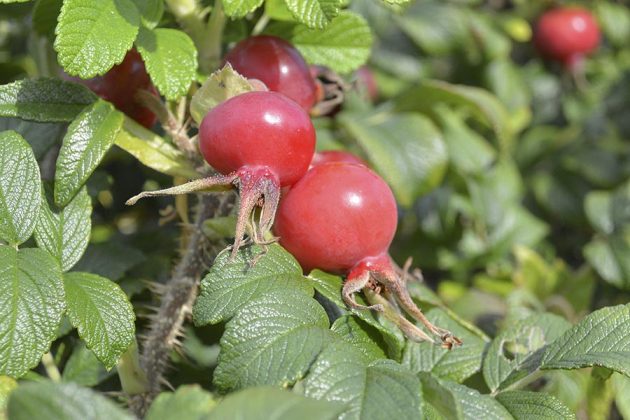Naples, Italy, is vibrantly orange. Bars and carts dedicated to serving Aperol spritzes are tiled and canopied with Aperol orange — a universal language that makes it easy for any tourist to find refreshment in the bustling city. Yes, these drinks are saccharine sweet, less bitter and less complex than other Italian aperitifs. But toward the end of a day an Aperol spritz fits between soft drinks and strong cocktails, and that eye-catching display of color in glasses and establishments serving drinks is a strong nudge towards having one. This is marketing powered by psychology: before taste and aroma create flavor, it’s our eyes that set the stage for flavor perception of a drink in hand.
Distillates are clear and it is a choice to leave them clear, or to create the shade of brown associated with Cognac, whiskey, brandy, spiced rum, etc., through barrel aging or the addition of caramel coloring. However, a rainbow of colors can be put to work to enhance flavor perception of a range of spirits, and to can tie in to marketing. There are three types of color to work with: synthetic, natural source and ingredient derived.
Synthetic colors made from fossil fuel derivatives offer color stability, uniformity, ease of hue control and low cost. There are only nine synthetic color additives certified by the FDA for consumption, and because some are known to cause allergic reactions, they must be named on the label. Colors extracted from natural sources such as beet juice must also be listed as a color additive. However when a product is colored by ingredients, for example elderberry juice used to make purple elderberry spirit, the elderberry juice does not need to be listed as a color additive.
Before exploring the color palette it is worth remembering that not everything safe to use in the spirit-creation process is safe for consumption in the finished product. Charcoal and charred wood are stalwarts of spirit finishing because they soften and add complexity to raw, unaged spirit. But while activated charcoal added to drinks and foods will make them Instagram-friendly black and edgy, consuming charcoal, not just consuming a product that has sat on charcoal, can be dangerous. Charcoal is often used as a medical treatment to remove toxins from the stomach, saving people from poisoning. Its powerful ability to absorb chemicals also means that a drink blackened and laced with charcoal may absorb chemicals people intend to retain in their bodies, such as prescribed medications like digoxin used to treat heart conditions or oral contraceptives. This is why New York City’s Department of Health has been enforcing FDA rules and issuing commissioner’s orders to cease serving food and beverages containing activated charcoal. However there is an alternative — walnut liqueurs like nocino and liqueur de noix made with Persian walnut (Juglans regia) or Black walnut (Juglans nigra) are made inky dark by unripe walnuts.
Blue curaçao has been indispensible in cocktails for its vibrant color, moreso than for the orange flavor that it adds to many spirits and liqueurs. Curaçao is essential for making a Blue Hawaii or a Blue Lagoon because its artificial hue of blue is stable. Butterfly pea (Clitoria ternatea) is a popular ingredient that quickly turns liquids blue that can be deepened or lightened by adding more of its flowers or watering the liquid down. However, it is not pH stable. When acidity is added in the form of citrus or carbonated liquids it turns from blue to purple to pink. Sharish Blue Magic Gin, McQueen Color Changing Gin, and the many other blue gins on the market have embraced this instability as a feature of their product. Red cabbage in an alkaline state is also blue, but there is a limited market for cabbage-flavored drinks, and it is difficult to get cabbage-blue color without cabbage flavor. A better alternative is huito fruit (Genipa americana) that contains iridoid blue pigments that are stable in acidic conditions, providing naturally derived blue color suitable for consumption and also stable at lower than neutral pH.
The liqueur Chartreuse gets its eponymous color by infusion of herbs in the distillate. While the 130 herbs and spices used to make Chartreuse are a secret, tarragon (Artemisia dracunculus) is rumored to be one of the herbs that provides color as well as flavor. Most of the lurid green absinthe on the market is tinted with artificial color. But there is an abundance of aromatic leaves that when infused in absinthe post-distillation will add green color as well as aroma. Field of Dreams absinthe uses lemon balm (Melissa officinalis) to turn their distillate leafy green and give the spirit a fully rounded flavor. Sorrel juice (Rumex acetosa) will stay green if ascorbic acid is added. Ascorbic acid also accentuates the sour flavor of sorrel. Matcha tea dispersed through a liquid endows it with green color, which is less suited to bottling because the bitterness is likely to become unpalatable and oxidization will cause the color to be unstable.
Although saffron (Crocus sativus) is an expensive ingredient, only a little yields a strong yellow color and distinctive flavor. North Norfolk in England was a saffron growing region in Tudor, Stuart and Georgian times. Cultivation of and selling this crop has been revived in the area, and products made with Norfolk Saffron include a liqueur and a spirit. Smoky Shafrannaaya vodka is a light shade of yellow. King Harry Orange and Saffron liqueur is a shade of deep yellow, almost orange, which cues taste perception of orange as well as making use of a local ingredient. Turmeric-colored non-alcoholic beverages like “golden milk” are highly popular on Instagram, and turmeric (Curcuma longa) can also be used to infuse spirits with yellow color. Only a small amount of turmeric is needed; using larger amounts also incorporates the soft spicy taste that is a bit like ginger without heat.
Annatto extract, derived from the seeds of achiote trees (Bixa orellana) is listed as a color additive by the FDA and widely used to color food and beverages. There have been a few cases of allergic reaction to it but not enough for it to be a restricted ingredient, though as a color additive it must be listed on labels.
Oranges (Citrus x sinensis) and other orange-colored citrus will color spirits orange, however you must check whether the citrus peel has been colored with Citrus Red No. 2. This food colorant is approved by the FDA for use on citrus peel, but only if the fruits are not intended or used for processing. Citrus Red No. 2 is listed by the EU as a 2B carcinogen; that is, there is some evidence it causes cancer in humans, although the evidence is not conclusive. So, if using citrus peel as a source of orange color it is vital to check whether they have been artificially colored. Rosehips, the fruit of roses (Rosa spp.), when macerated post distillation add tawny orange color and fruity taste to a spirit, though it needs filtering to remove the fine particles of fruit flesh that create slight cloudiness and opacity.
Distinctively red Campari stopped using cochineal, crushed Dactylopius coccus insects, and replaced it with artificial red colorant. Additionally, “Florida Statute 562.455 (Adulterating liquor; penalty),” which includes cochineal in its list of adulterants, was recently cited in a class action suit against a drinks manufacturer. But other red aperitifs use cochineal as a natural source of a highly stable color, one that does not create the flavor taint that some people associate with synthetic red color additives. Strawberries will infuse a soft red color. Other natural sources of color close to red tend towards dark pink or purple. For example hibiscus (Hibiscus sabdariffa) colors spirits a strong dark pink. Beet juice is purple-pink. Macerations of raspberries will turn spirits dark pink and rhubarb yields a soft pink.
Berries can provide shades of purple. Elderberry (Sambucus nigra) forms dark purple infusions with an earthy taste. While blackcurrant (Ribes nigrum) also infuses dark purple, it has a bright currant flavor. However blackcurrants cannot be cultivated in parts of the US. Some states ban or restrict cultivation to protect high-elevation white pines, which have significant ecological value because blackcurrants can carry white pine blister rust. For example, in Maine blackcurrant is prohibited; but in New York, disease-resistant cultivars can be grown, and in Florida there are no restrictions.
When considering what color a spirit should be, it isn’t just a case of what the spirit category dictates or enhancing flavor perception. It is worth considering how the spirit will be served. Martinis can offer the pH-neutral or slightly alkaline conditions in which butterfly pea will remain blue. Sours and gimlets will have acidic pH but the spirit remains relatively concentrated. By contrast, a spritz will dilute the spirit more and also dilute its color.
Choosing a color for your spirit is something you already do even if you are bottling it clear or in a selected shade of brown. Moving to a bold color for a new product or variation on an existing line is an extension of that. With numerous ingredients and compounds that create color in liquids, the choice of what color to use rests on how it is intended to influence flavor perception and how it might support a branding and marketing strategy.












